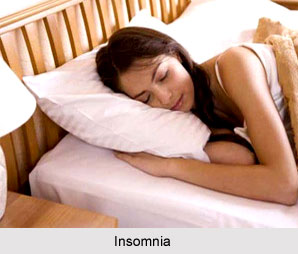Insomnia is a symptom of a sleeping disorder characterised by continual difficulty in falling asleep or staying asleep despite all the comfort. Insomnia is a symptom, not a static diagnosis or a disease. It is usually followed by functional mutilation while awake. Insomnia may be due to various reasons; like hormonal imbalance, antibiotic drug, mental disorders, hyperthyroidism, and medications.
Yoga is suitable for people of all ages and provides a holistic healing to the human body and mind. It also cures Insomnia with time and benefits sleep in many ways. The problem of Insomnia is thus greatly solved by the regular practice of meditative and cultural Yoga asanas. The quality of sleep also improves because of the stimulatory effect yoga bestows on the nervous system, and in particular, the brain. The practice of certain yoga postures increases the blood circulation to the sleep center in the brain, which has the sedative effect of normalising the sleep cycle. One will need less sleep because yoga increases the rate of elimination of toxins from the body and rejuvenates the entire body right down to cellular level. The practice of breathing allows for more oxygen in the body providing transparency to the mind. Yoga therefore helps one to fall asleep sooner and also improve the quality of the sleep.
The individual will have a more restful sleep because of the relaxing aspect of yoga and the subsequent relieving of stress, tension and fatigue. However, one should also bring some changes in his/her diet, besides executing a regular routine of Yoga. One should avoid stimulating drinks containing caffeine before bedtime and also avoid alcohol. The last meal should be taken at least three hours before bedtime. Relaxation techniques like having a warm bath, fresh air circulation in the room and others also help one to overcome the problem of Insomnia.
Yoga asanas for Insomnia are as follows -

•Simple stretching and relaxation exercises of yoga can increase suppleness, enhance mental and physical relaxation, and improve the quality of the sleep.
•One can use breathing techniques like Pranayama for five minutes to relax and unwind from daily activities.
•Gentle stretches for ten minutes are very important for a good sleep. One should stretch only as far and as he is comfortable.
•The complete body stretch helps in Insomnia. Inhaling deeply, one should raise the arms above the head with hands clasped, and come up on to the toes. Stretch the whole body upward, exhale and then bring the arms to the side, and lower the heels to the floor.
•Three-part breath is a technique of Yoga that is very helpful for clearing the mind of the day`s clutter. One should use this simple exercise to prepare the body for sleep.
•Neck exercises are very important in dealing with Insomnia. One should turn the head to right and left to free any tension in the neck muscles and let the neck relax. Finally one should tense the facial muscles and then release them, one should drain out all the tensions around jaw and mouth, the eyes, and away from the forehead.
Yoga Nidra Relaxation is an excellent process to overcome the trouble of Insomnia. It is the concept of pure sleep without any stress or pressure. One should breathe deeply and evenly through both nostrils for several seconds and feel the breath flow right down into the abdomen. As the person exhales, one should let any remaining tension in the body to flow out with it. While this exercises, one should visualize a relaxing scene, and then flex the feet hard. As the person feels the tension draining down from the feet, ankles, calves, knees, thighs, buttocks, and abdomen then he should exhale. One should focus on the hands and shoulders; the shoulder blades should be relaxed three times.
Exercising regularly helps one to sleep better at night. Vigorous yoga, such as power yoga or Ashtanga, done at least three times a week is a good choice to fight with insomnia. However, one should avoid intense exercise right before going to bed by doing the practice earlier in the day. Before going to bed, one may do a few gentle stretches to relieve tension and help one to relax. Corpse pose or Savasana ends every yoga class, and it is a good way to end the day too. Lying in bed, one should focus on each part of the body and soften it before moving on. The person should spend a few minutes just breathing and concentrating on the breath. This helps to create a break from the active mind and allows one to relax for sleep. Insomnia is one of the many ailments that regular Yoga can easily solve.
DISCLAIMER - The Yoga asanas prescribed above should be strictly performed under the supervision of an experienced Yoga teacher.




















